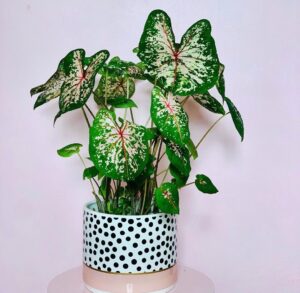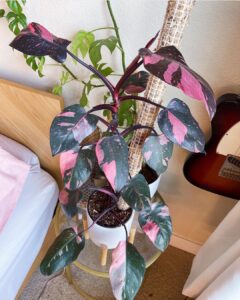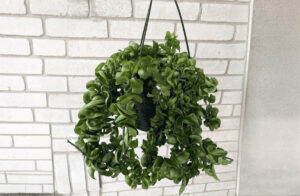President Donald Trump signed an executive order Monday at the White House, directing federal agencies to immediately cease procurement of paper straws and develop a comprehensive strategy to phase out their use nationwide within 45 days.
The executive order, which takes immediate effect, marks a significant reversal of Biden-era environmental policies and reopens the contentious debate over single-use drinking implements in America.
“We’re bringing back common sense to America,” Trump declared during the signing ceremony. “These paper straws are a disaster. They dissolve in your mouth, they’re expensive, and worse, they’re actually bad for your health.”
The order specifically targets the presence of PFAS, or per- and polyfluoroalkyl substances, commonly known as “forever chemicals,” in paper straws. Recent scientific studies have found that 90% of paper straws contain these potentially harmful substances, which can leach into beverages.
Dr. Sarah Martinez, an environmental toxicologist at Georgetown University not involved in the administration’s decision, explains: “The presence of PFAS in paper straws presents a legitimate concern. These chemicals are highly water-soluble and can transfer into drinks, potentially exposing consumers to unnecessary health risks.”
For many Americans, the paper straw mandate has been a daily source of frustration. Sarah Jenkins, a mother of three from Cincinnati, describes her family’s struggles: “My kids can’t even finish their drinks at restaurants anymore. The straws turn to mush halfway through the meal, and I’m constantly worried about my 4-year-old choking on soggy paper bits.”
Restaurant owners across the country have reported similar complaints. Michael Chen, who operates a chain of bubble tea shops in California, says customer complaints have doubled since switching to paper straws. “People are paying $6 for a premium drink, only to have the straw collapse before they can finish it. Some customers now bring their own reusable straws.”
Social media platforms are filled with similar grievances. Reddit threads and online forums have accumulated thousands of comments from users describing the “bizarre, rubbery mouthfeel” and “distinctly unpleasant taste of wet paper. One common complaint across platforms is how paper straws become soggy and turn into “a limp wad of paper” after just a few sips.
Fast-food chains have reported customers requesting multiple straws per drink, potentially increasing waste rather than reducing it. “We’re going through three times as many straws now,” says Tom Rodriguez, manager of a popular drive-through restaurant in Texas. “Customers often ask for extras because they know the first one won’t last through their meal.”
The executive order addresses these practical concerns while also focusing on the health implications. White House spokesperson Lisa Chen points to numerous consumer complaints about the straws’ tendency to disintegrate: “We’ve heard from parents, teachers, and healthcare workers about paper straws falling apart in hot drinks, becoming choking hazards, and leaving an unpleasant paper taste in beverages.”
Environmental groups have expressed mixed reactions to the announcement. While some criticize the return to plastic alternatives, others acknowledge the legitimate concerns about paper straw safety.
“This isn’t just about convenience,” said James Wilson, Trump’s newly appointed environmental adviser. “Studies show paper straws often have a larger carbon footprint than plastic ones, requiring more water in their production process and frequently coming wrapped in plastic packaging.”
The economic impact of the order could be significant. The paper straw industry, valued at approximately $1.6 billion annually, faces potential disruption. However, administration officials argue the move will benefit small businesses currently paying premium prices for paper alternatives.
“Restaurant owners have been forced to pay up to five times more for paper straws that customers hate,” said Commerce Secretary Gina McCarthy. “This order allows businesses to make their own choices based on customer preferences and economic factors.”
Critics of the order, including Democratic leadership, argue the move represents a step backward in environmental protection. Senate Majority Leader Chuck Schumer called it “another example of putting politics over planet.”
The administration defends the decision by pointing to scientific evidence suggesting paper straws may not be the eco-friendly alternative they were marketed as. A 2023 study published in the Environmental Science Journal found that paper straw production can generate higher carbon emissions than plastic straw manufacturing.
The executive order consists of two main components:
- An immediate halt to federal procurement of paper straws
- A mandate to develop a National Strategy to End the Use of Paper Straws within 45 days
The order requires federal agencies to submit compliance reports within 30 days and establishes a task force to monitor implementation. State and local governments will not be directly affected but are encouraged to adopt similar measures.
As federal buildings prepare to transition back to plastic alternatives, the administration emphasizes this represents part of a broader strategy to combine environmental responsibility with practical solutions and public health considerations.
The White House indicates further executive actions on environmental policy may be forthcoming, suggesting this could be the first in a series of moves to revisit Biden-era environmental regulations.
References:
Fact Sheet: President Donald J. Trump Ends the Procurement and Forced Use of Paper Straws, The White House, February 10, 2025
Paper straws are a bad solution to the plastic straw ban, Reviewed, June 12, 2019
Not so eco-friendly? Paper straws contain more ‘forever chemicals’ than plastic, study says, USA Today, August 28, 2023
Paper drinking straws may be harmful and may not be better for the environment than plastic versions, Science Daily, August 25, 2023
Did you know?
- Producing a paper straw requires 96 kilojoules of energy and produces 4.1 grams of carbon dioxide emissions, while producing a plastic straw requires 39 kilojoules of energy and produces 1.5 grams of carbon dioxide emissions.
- Paper straws emit more greenhouse gases when they rot in a landfill compared with plastic.
- The amount of greenhouse gases released during the lifecycle of paper straws has been estimated to be anywhere from the same as plastic straws to a quarter of the emissions.
- One study found paper straws had a higher relative environmental impact than plastic ones, mainly due to the land use needed for trees.
- “Eco-friendly” paper drinking straws contain long-lasting and potentially toxic chemicals. PFAS were found in the majority of the straws tested and were most common in those made from paper and bamboo. The paper straws were most likely to contain PFAS, with the chemicals detected in 18/20 (90%) of the brands tested.
- Paper straws contain harmful additives, are challenging to recycle and degrade, are costly to build, and are not environmentally friendly.







